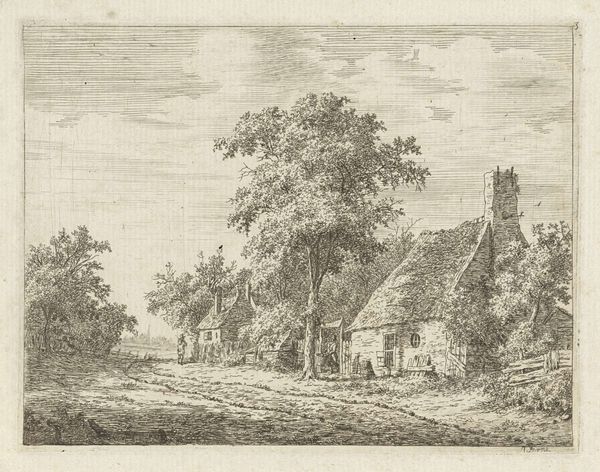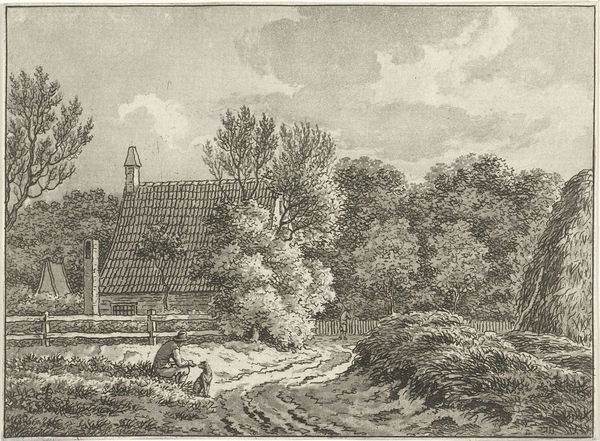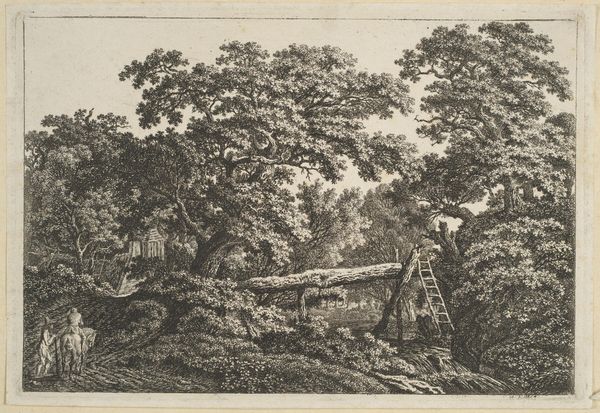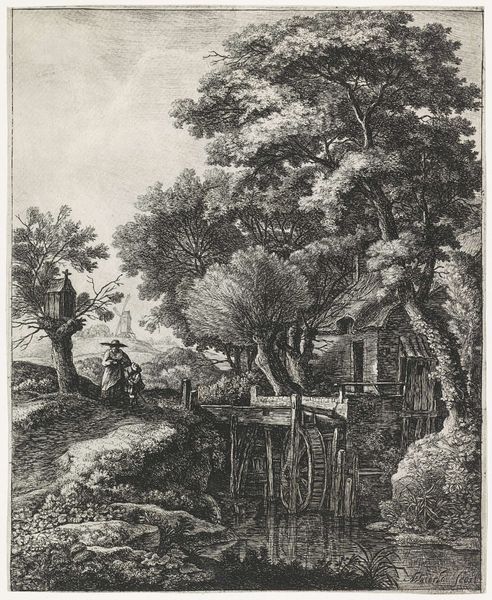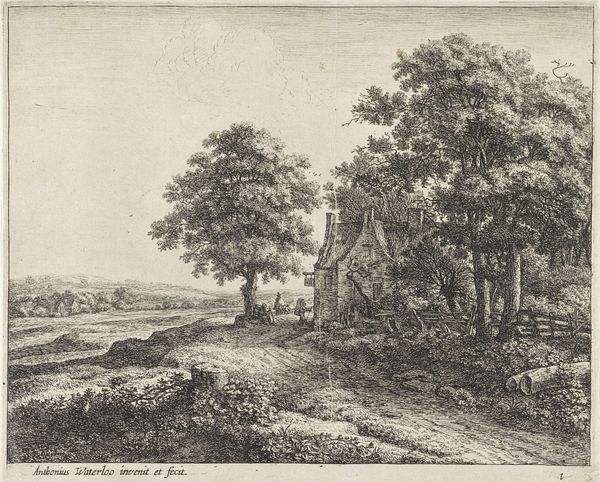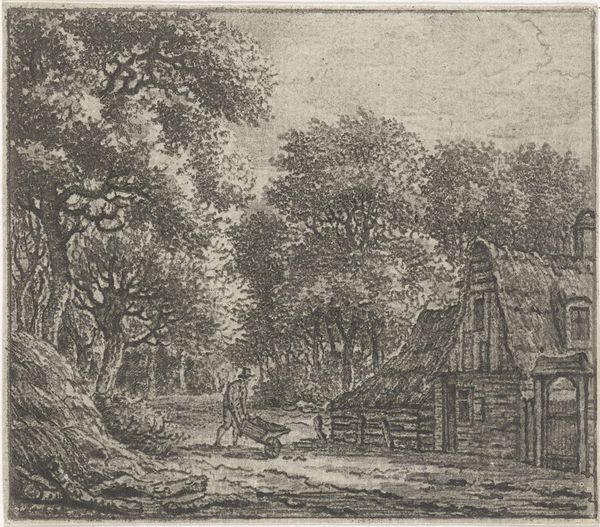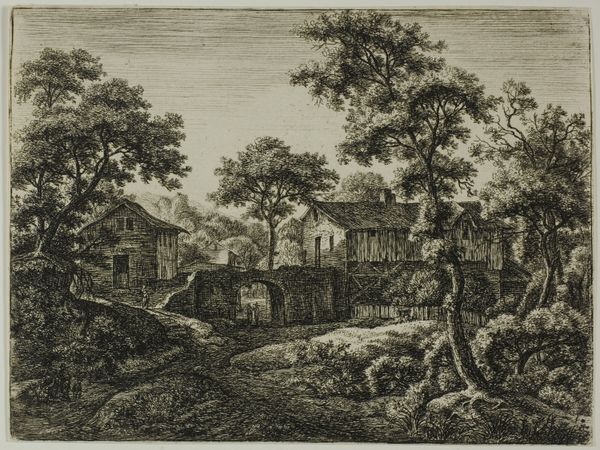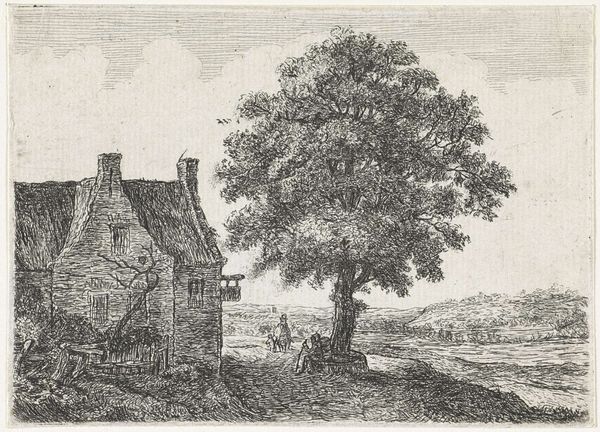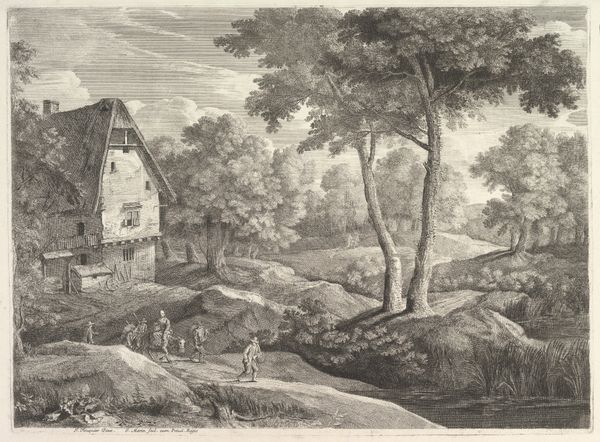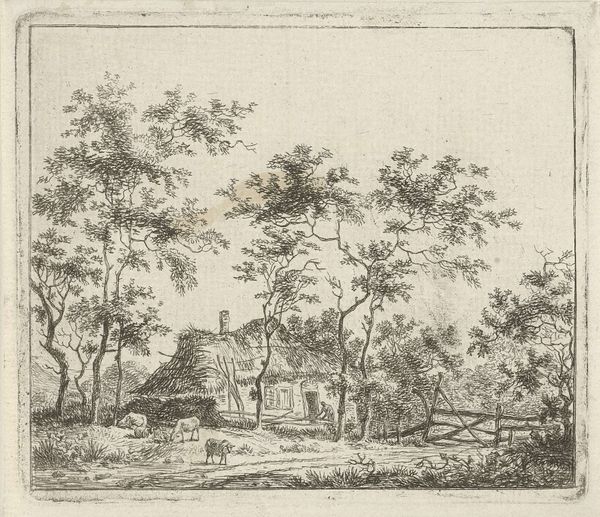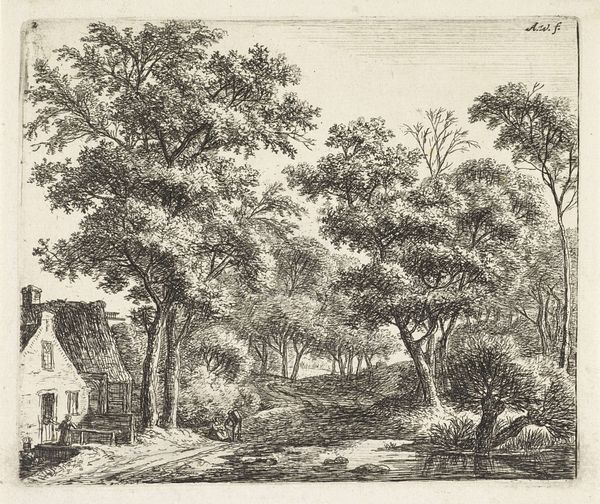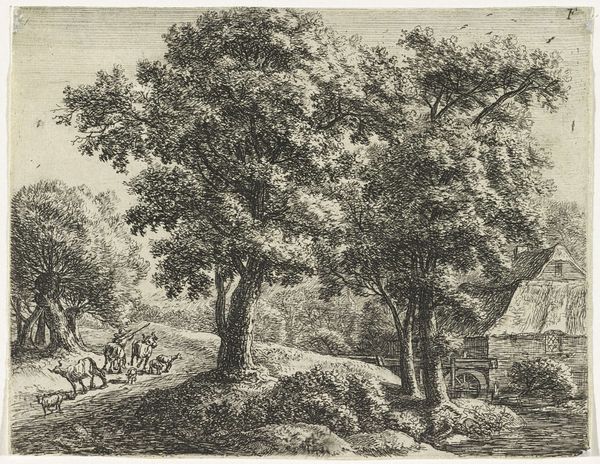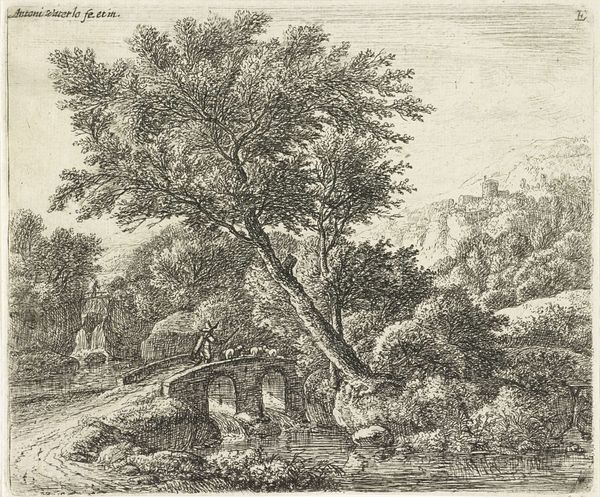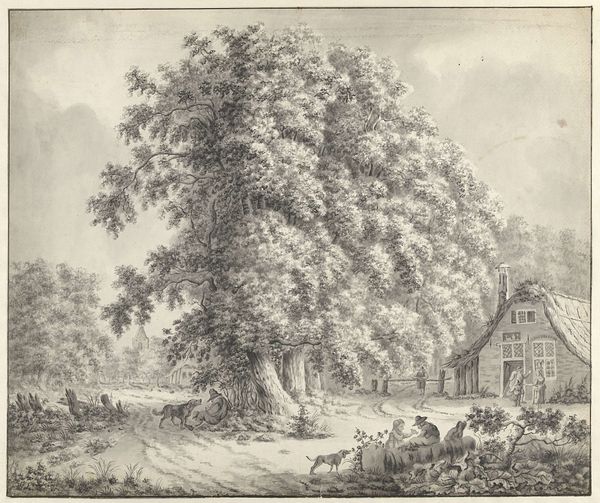
drawing, print, etching, paper
#
drawing
#
baroque
# print
#
etching
#
landscape
#
paper
#
genre-painting
Dimensions: 151 × 204 mm (image); 154 × 206 mm (sheet)
Copyright: Public Domain
Curator: There’s an enchanting tranquility to this scene, wouldn't you agree? A quaint building nestles into the trees, a scene I could easily lose myself in. Editor: Indeed. We’re looking at “The Mill in the Wood," an etching by Anthonie Waterloo. Although the date of creation is unspecified, its stylistic characteristics place it firmly within the Baroque tradition. An interesting element of genre painting is at play within the idyllic scene. Curator: That term, Baroque, it speaks to a grandness and drama I wouldn't readily apply here. The details, the light filtering through leaves, they feel so delicate. The presence of figures and animals imply hard work at the same time they introduce narrative. Do you get a sense that its almost too quaint, too pastoral? Editor: Perhaps “baroque” isn’t immediately obvious, but consider the conventions of landscape in that era, especially in the Dutch context. Landscapes weren't simply records of a place. The details could carry significant cultural meaning, reinforcing social hierarchies. Here, even the placement of the mill signals the importance of industry. What's more, we cannot ignore its place within a tradition of printmaking. This allows wider distribution. This seemingly bucolic scene is actually a commodity. Curator: A commodity that speaks to class. What looks picturesque obscures the exploitation of the underclass that toils in these spaces. I am looking at that path and thinking of the ways people and pack animals had to labor so that landowners might be free to enjoy the shade in their forests. Editor: Precisely. Waterloos skill with etching helped bring such imagery to an expanding market for art among the bourgeoisie. So a scene such as this is actually circulating ideas and ideals about the rural economy within this very economy. Curator: Knowing this makes me look differently at the entire image. It takes the charm away from that wheel turning on the mill. I can start to feel that turning of labor grinding people down in its gears. Editor: That's what makes Waterloo's landscape so engaging for our time. Its delicate aesthetics masks the robust and somewhat harsh political realities it inevitably implicates. Curator: It also speaks to how landscapes shape so much more than what we see as passive beauty. The landscape’s very existence becomes embroiled in exploitation. This also helps us realize that every picture presents one view. Editor: Indeed. Hopefully listeners will appreciate it. It’s also a work in conversation, still offering critical perspectives for each viewer today.
Comments
No comments
Be the first to comment and join the conversation on the ultimate creative platform.
